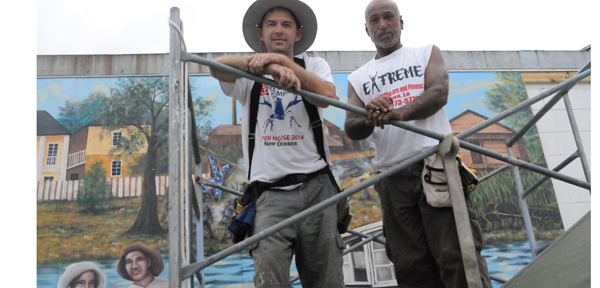After preserving and showcasing the history of St. Charles Parish for nearly 30 years, the St. Charles Museum and Historical Society is dissolving its organization.
“When we became the St. Charles Museum and Historical Society, we had a board of directors that reviewed and decided what projects we wanted to complete,” said board member Rita Carlson, “and we realized we didn’t have the manpower to do other projects, so we thought for years now that we would close after the projects were finished.”
“I also planned for when I ran out of money.”

The St. Charles Museum and Historical Society was formed in 2007 through the merger of the River Road Shell Norco Museum and the St. Charles Historical Foundation. At the time of the merger, Shell Norco had closed the museum on its property for safety reasons, and the St. Charles Historical Foundation, which had been established in 1996, was preparing to publish an illustrated book on the history of St. Charles Parish.
Over the years, the organization has initiated, sponsored, completed or supported several significant projects in the parish, including the German Coast Farmers Market, the history museum website www.scphistory.org, Destrehan’s Mile of History, the book “St. Charles Parish, Louisiana: A History in Pictures,” and a mural at River Road Market & Deli in Destrehan.
The idea for a mural based on the area’s history was first floated ahead of the parish’s bicentennial in 2007. The mural consists of 17 panels painted by artist Hans Geist in his Houma studio and then transported to the installation site by Geist and assistant Alvin Naquin. The panels tell the story of the area from the early French settlers to the present, capturing key moments along the way, including the 1811 slave rebellion, the Civil War and the impact of the oil industry on the region.
“St. Charles Parish, Louisiana: A Pictorial History” has evolved from simply a pictorial history of St. Charles to an extensive historical review featuring timelines, first-hand testimonies, legal documents, maps, charts, graphs, photographs, etc. Written by Joan Becnel, Suzanne Friroux, Marilyn Richoux, and Faye Luke, the book covers more than 300 years of the parish’s history.
Carlson said creating the online museum at www.scphistory.org was especially emotional for several reasons.
“One is that I got to work with Joan (Becnel), who is so smart and intelligent. She always has such great ideas,” Carlson said. “And she discovers history in so many different ways. It’s like detective work. And the people here are so supportive and always go out of their way to help me gather photos of their family histories.”

Another favorite is the annual Mother’s Day Parade held by the Odd Fellows of Hahnville. The Odd Fellows were formed in 1887, and the parade has been going for almost that long. Carlson also featured “An Evening with Notables,” which the association held in 2003 to celebrate the 200th anniversary of the Louisiana Purchase. The notables were played by leaders in the parish community, including Leah Chase as Lindy Boggs, Joel and Sandra Chaisson as Napoleon and Josephine, and Harry and Mary Ann Lemon as Robert Livingston and his wife.
Carlson said the past 30 years have been fun and enlightening, but the decision to disband the organization wasn’t a difficult one.
“We were short on funds and short on manpower,” she said, “but new items, new pieces of history keep coming up all the time, and because the museum is online we can always add to it.”
Indeed, Carlson expects the directors to continue meeting and communicating with one another, especially as new historical information becomes available.
She thanked everyone, including chairperson Sue Friloux, treasurer Coy Landry, secretary Elizabeth Claudette, fellow trustees Harriet Williamson, Joan Becnel and Tony Garage, as well as late trustees Don Ellis, Colette Rottinger and Marilyn Richieux, for their time and effort put in over the years.
She added that it was important to protect and preserve the historic projects the group has worked on.
“We have asked the parish government to consider continuing our work, either by establishing a cultural affairs office or department, or by forming a committee of citizens interested in showcasing our history,” she said. “We are very grateful for the public’s interest in all our projects, and we know they would like this work to continue.”


